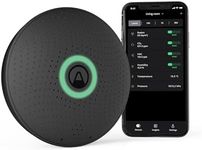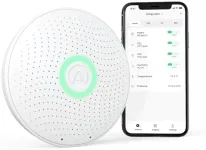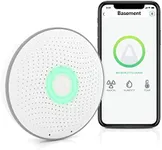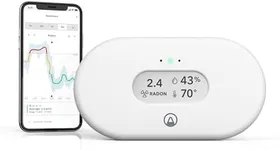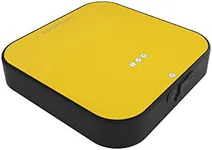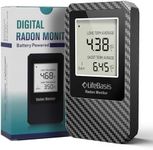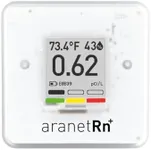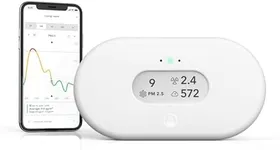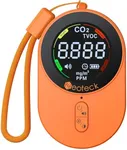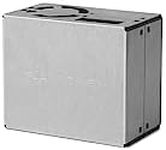Buying Guide for the Best Radon Monitor
Choosing the right radon monitor is crucial for ensuring the safety and health of your home or workplace. Radon is a radioactive gas that can cause serious health issues, including lung cancer, if it accumulates to high levels. A radon monitor helps you detect and measure the concentration of radon gas in the air, allowing you to take necessary actions if levels are too high. When selecting a radon monitor, it's important to consider several key specifications to ensure you get a device that meets your needs and provides accurate, reliable readings.AccuracyAccuracy refers to how close the monitor's readings are to the actual radon levels in the air. This is important because inaccurate readings can either give a false sense of security or cause unnecessary alarm. Accuracy is usually expressed as a percentage. Higher accuracy (closer to 100%) is better, but for most home use, an accuracy of around 90-95% is generally sufficient. If you need the monitor for professional or scientific purposes, you might want to opt for a device with higher accuracy.
Response TimeResponse time is the amount of time it takes for the monitor to provide a reading after being exposed to radon. This is important because quicker response times allow for faster detection and action. Response times can range from a few minutes to several hours. For continuous monitoring, a longer response time (up to 24 hours) is acceptable, but for spot checks or initial assessments, a shorter response time (a few minutes to an hour) is preferable.
Display and InterfaceThe display and interface of a radon monitor determine how easy it is to read and interpret the data. This is important for ensuring that you can quickly understand the radon levels and take action if necessary. Some monitors have simple digital displays, while others offer more detailed information and even connectivity to smartphones or computers. If you prefer straightforward, easy-to-read data, a basic display will suffice. However, if you want more detailed analysis and tracking, look for a monitor with advanced display features and connectivity options.
Power SourceThe power source of a radon monitor can affect its convenience and placement options. Monitors can be battery-operated, plug-in, or even solar-powered. Battery-operated monitors offer flexibility in placement but require regular battery changes. Plug-in monitors provide continuous power but need to be near an outlet. Solar-powered monitors are eco-friendly but depend on sufficient light exposure. Choose a power source that fits your monitoring location and convenience preferences.
Data Logging and StorageData logging and storage capabilities allow the monitor to record radon levels over time, which is important for tracking trends and identifying patterns. This feature is particularly useful for long-term monitoring and for providing data to professionals if needed. Some monitors store data internally, while others offer cloud storage or connectivity to external devices. If you need to keep detailed records, look for a monitor with robust data logging and storage options.
Calibration and MaintenanceCalibration and maintenance refer to the processes required to keep the monitor accurate and functioning properly. This is important because regular calibration ensures the monitor continues to provide reliable readings. Some monitors require professional calibration, while others can be calibrated by the user. Maintenance needs can vary, with some monitors requiring periodic sensor replacements or software updates. Consider how much time and effort you are willing to invest in maintaining your monitor when making your choice.

